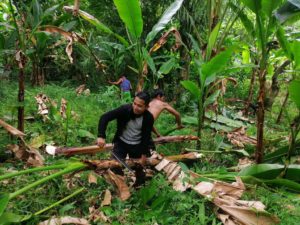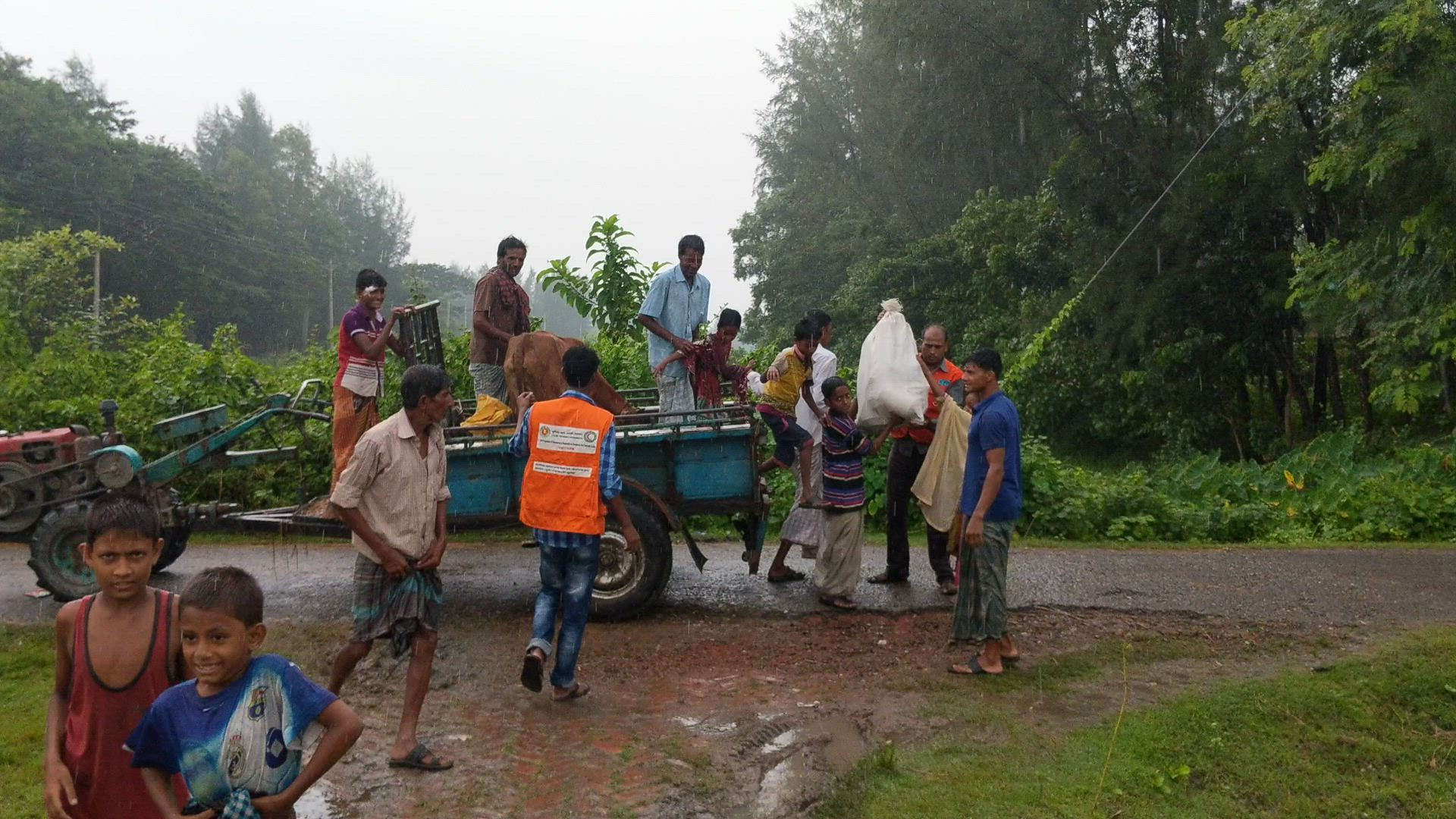Example Philippine Red Cross:
Reaping rewards: early harvesting of abaca trees in Typhoon Tisoy

© PRC
The Philippine Red Cross (PRC) is well-versed in FbF simulations. In 2019, the Philippine Red Cross (PRC) organised three simulations to test the Typhoon EAP early actions, namely: early harvesting of abaca trees in Catanduanes Island, shelter strengthening in Aurora Province, and livestock evacuation in Davao Oriental Province.
PRC Tabletop + Drill Format
Although the early actions tested varied, the three-day training format for all province PRC Chapters remained the same:
Day 1
The first day is used for a tabletop exercise to review what must be done by the Chapter to simulate the moment the Chapter receives the alert message on day -4 (4 days prior to typhoon landfall).
Day 2
The second day the PRC employs a drill, which covers the early actions to be taken on day -3 and day -2.
Day 3
The final day is reserved for a thorough debriefing of the simulation exercise.
For each simulation exercise, PRC encourages additional Red Cross chapters to join to boost learning and EAP capacity, as well as invites provincial government partners. Large groups of participants are split into several communities on the second day of the exercise to apply their early actions in an activation scenario.
Each simulation requires ample preparation prior to the exercise taking place. It is crucial that this activity is jointly planned with all involved agencies at the province level at an early stage (at least a month prior).
The criteria below represents the minimum PRC preparation components:
- A Typhoon scenario as close to reality as possible
- Key target areas/venue
- Engagement of all agencies and participants needed to execute all EAP roles and responsibilities
- Resources (transport, material, volunteers, etc.)
Read the PRC 2019 Simulation Report here, for a complete overview of PRC’s approach.
Practicing simulations has yielded significant benefits for the PRC. According to FbF Delegate, Damien Riquet, “The simulation was a great help in enabling the Catanduanes PRC chapter to activate early actions December 2, 2019 prior to the landfall of Typhoon Tisoy. In past storms, when Abaca trees were destroyed, this not only meant significant losses for farmers, but also a continuous lack of income for those workers normally employed for processing the fibres.
PRC volunteers were on their own as our team didn’t manage to reach the island three days before typhoon landfall. However, the Catanduanes chapter took full agency of their early actions, and executed everything as planned: 5 barangays (communities) were selected with Caramoran municipal authorities, and volunteers were deployed to each of them to (i) recruit 20 workers, (ii) validate the list of the farms that should be assisted in early harvesting of abaca trees, and (iii) supervise the early harvesting of matured abaca trees in the selected farms. Although coordination with provincial authorities could have been a bit better, the volunteers applied the learnings from the simulation exercise – and even tested leaf trimming for the young abaca trees.
Aside from the importance of training chapters, authorities and volunteers, simulation exercises are very important to validate some of the assumptions we make in the EAP: like the time needed to strengthen houses with Shelter Strengthening Kits, how best we can orient workers and beneficiaries, how to do the registration of animals being evacuated, etc. All these learnings can be only gathered through real time testing (and if we don’t have a typhoon to do activation, it is best to do simulations)”.
Alejandro Terán talks about the importance of drills and simulations and his experiences with Volcanic Ash exercises in Ecuador:


